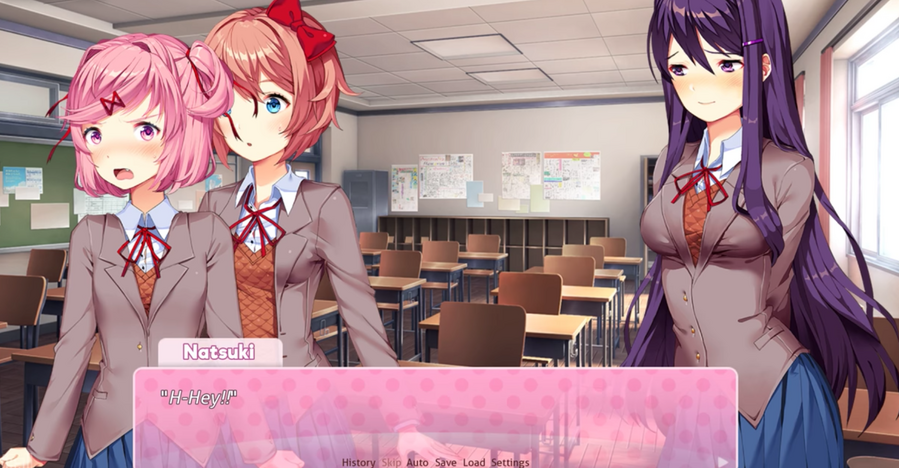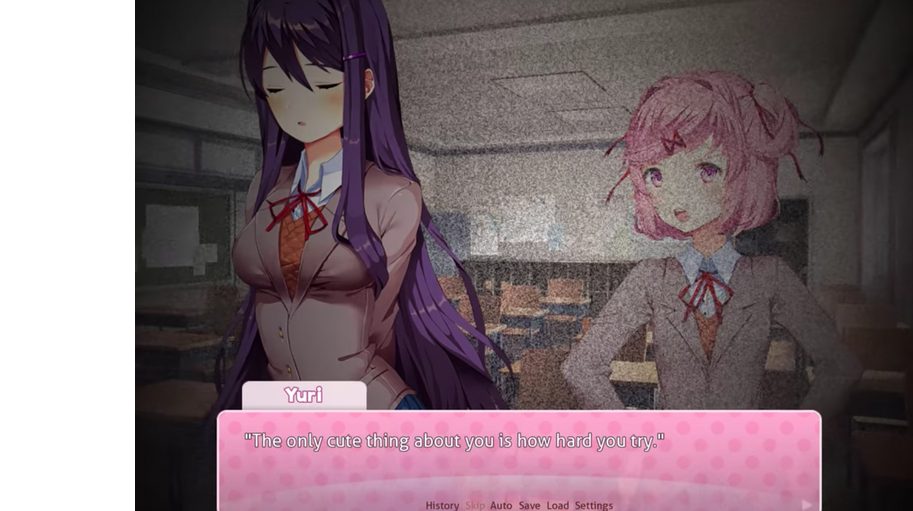This wasn’t my first playthrough of Doki Doki Literature Club. I had first experienced it (completely spoiler free) in 2018, so I was looking for a different way to experience the game. Luckily, one of my friends had never even heard of it. I decided to have her play it and watch the results. While I was expecting to be entertained by her reactions to the more intense scenes present in the game, I noticed myself being drawn to her acutely rhythmic tapping of the space bar. It was almost always in perfect sync with the music present. When the music turned upbeat and cheery, she would tap faster; when it was melancholy and reserved, she would take longer to read each sentence. This immersed her in the world of the characters, ultimately ending in an even greater sense of dread once the game took a turn for the worse.

DDLC‘s music utilizes several appeals to the player’s unconscious, contributing greatly to the effect of its psychological horror. By feigning normalcy for such a long time, mimicking the attributes of a typical anime dating sim, the player is lured into a sense of comfort and immersion. The music becomes a wonderful backbone for the player to rely on, causing it to be a perfect culmination of this comfort. It remains entirely inconspicuous, yet present at nearly all times. This makes the impact of its changes that much more significant.

This unidentifiable sense of dread was particularly noticeable at the start of act 2. Upon reentering the classroom, the typically standard background music began to increase by several semitones until its repeat. It was around this point that my friend turned to me and noted how terrifying the game was becoming, despite the lack of any obvious horror. When I asked why, she couldn’t put her finger on it. The effect of the music’s subtle change struck at the subconscious level of horror – a minuscule change that, when not closely attended to, can catch the player by surprise.
It was only through the observation of another that I was able to truly identify what felt so off about the later acts of DDLC. This stands as a testament for how impactful these subtle changes in sound are to altering the gameplay experience.


I was also struck by the use of music in DDLC, especially relating to character interactions. During Act 1, the music remains upbeat and cheery when in the classroom, and when reading each individual girl’s poems, the music retains the same theme but is played with different instruments or rhythms in order to evoke the stereotypic personality of the girl you are talking with. For example, when reading Natsuki’s poem, the same theme music is played by a recorder in an off-pitch and childlike manner, reminiscent of her cute personality type, meanwhile, when reading Yuri’s poem, the music is played by strings in an orchestral and moody arrangement, on theme with her mysterious personality. The music aids in strengthening the problematic stereotypes of girl, and even will cut out at certain points completely when Monika makes a meta-reference, foreshadowing the issues that lie ahead.
I completely agree that the music was critical to the development of mood and atmosphere in DDLC. I played the game with a friend who is a big Doki Doki fan observing. As soon as I began playing, he started to sing along to the main theme. Though the music initially seems deceptively generic, it truly does seep into your psyche in a way that truly underscores the game’s disturbing content. I thought that some of the most effective uses of music occurred when the initial, cheery main theme played while the game’s visuals became distorted and ominous. This juxtaposition used the music to recall the player’s initial expectations for the game while the visuals fully rejected these expectations.